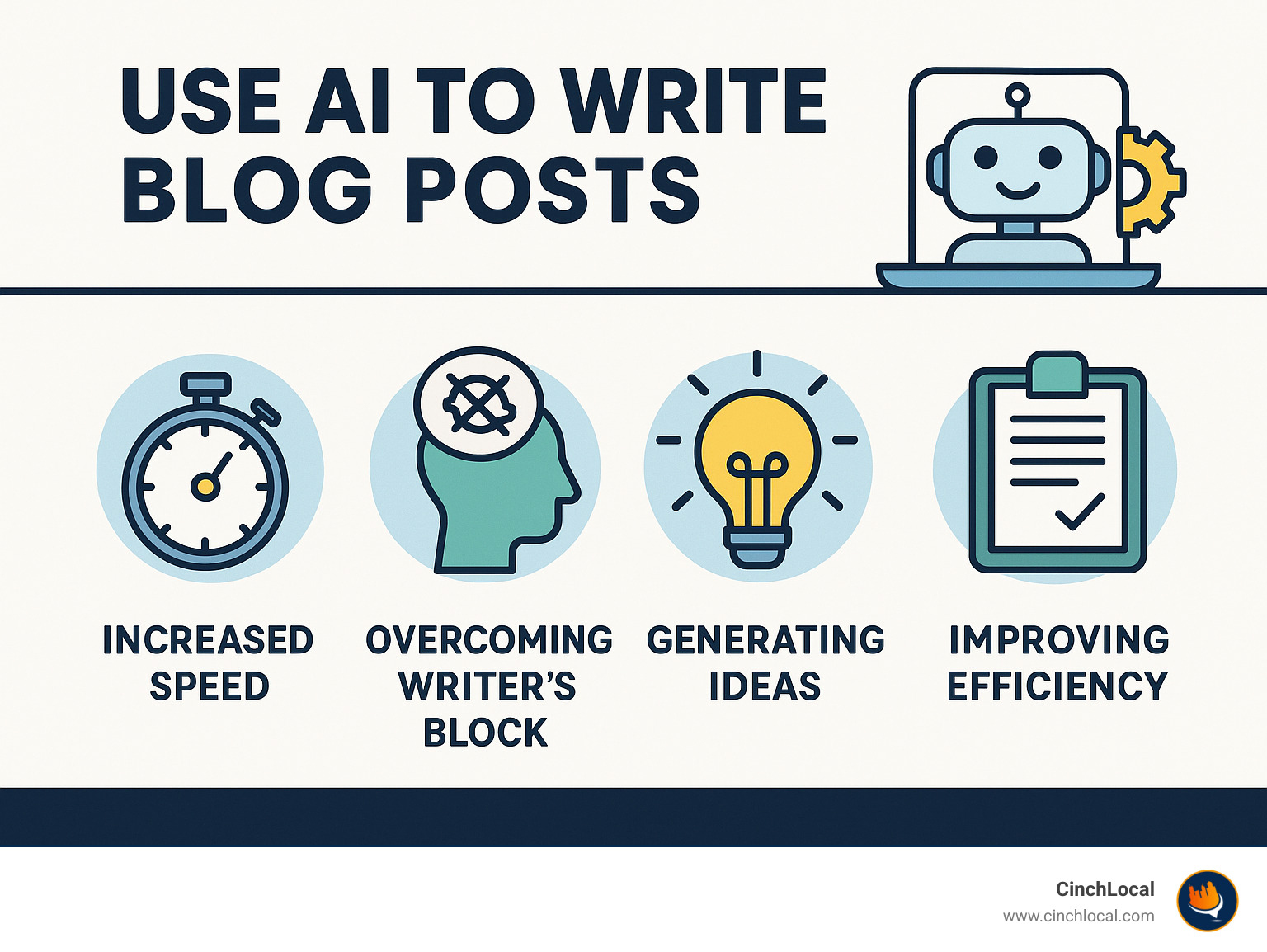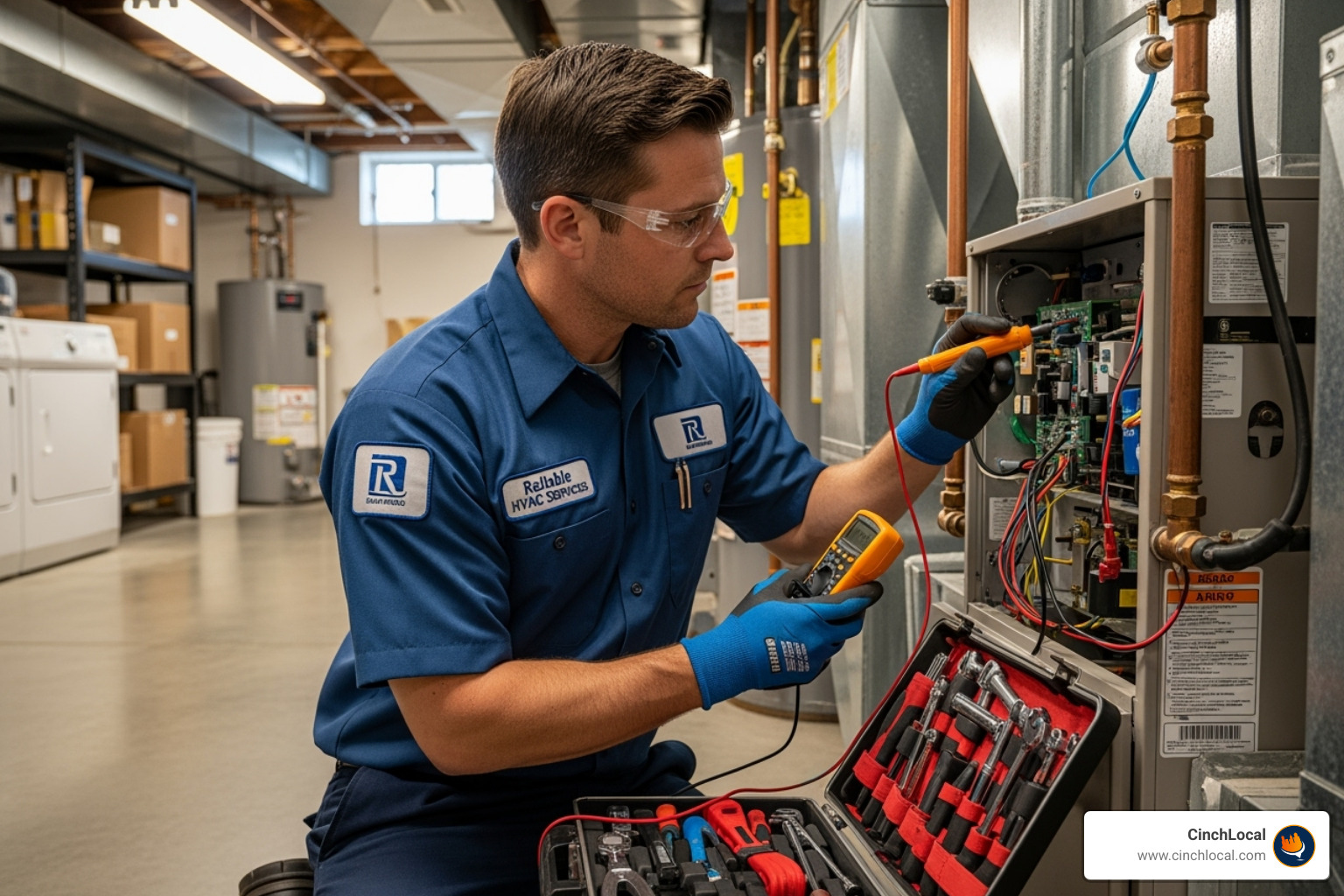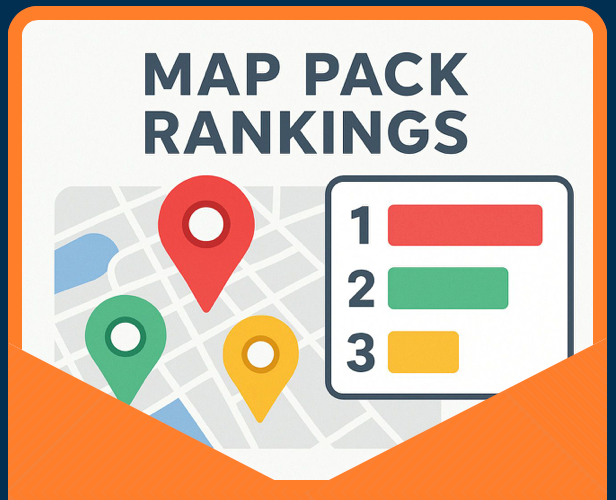
Cary Byrd // Founder of CinchLocal
Unlock Your Inner Blogger: Writing Posts with AI
The AI Revolution in Blogging: What You Need to Know

The digital world moves fast, especially for roofing contractors looking to keep their schedules full. At CinchLocal, we've built our reputation on delivering comprehensive digital marketing solutions for roofers that win jobs, and one of the smartest new tactics is learning how to use AI to write blog posts efficiently. For many, it's a game-changer that helps with brainstorming, outlining, drafting and SEO refinement. It's all about making content creation easier and more effective. This guide will show you exactly how.
I'm Cary Byrd, CEO of CinchLocal.com. With over a decade of experience managing online content, I understand how to leverage digital tools for maximum impact. Let's explore how AI can transform your content strategy.

Use ai to write blog posts definitions:
The world of content creation has been transformed by artificial intelligence (AI). It's not a fad; it's a fundamental shift. Research shows that 93% of creators use AI to generate content faster. This isn't about replacing human creativity but enhancing it, providing a powerful tool to streamline workflows and overcome writer's block.

Google's Stance on AI-Generated Content
What does Google think about using AI for blog posts? Google's stance is clear: their focus is on the quality and usefulness of the content, regardless of how it was generated. Their policies emphasize that content, whether human or AI-generated, should be helpful, high-quality, and created for users, not to manipulate search rankings. This means we can use ai to write blog posts , provided the content demonstrates E-E-A-T (Experience, Expertise, Authoritativeness, Trustworthiness). You can review Google's official guidelines on AI content for more detail.
Benefits of Incorporating AI into Your Blog Writing Process
The benefits of using AI are compelling:
- Time-Saving: AI tools drastically reduce content creation time. Some users report cutting their time on long-form content from 8 hours to just 2.25 hours per article.
- Overcoming Writer's Block: AI acts as a brainstorming partner, providing outlines and topic ideas to get you started.
- Scalability: AI helps generate a high volume of content, from listicles to social media posts, with remarkable speed.
- Consistency: AI can be trained to adhere to a specific brand voice, ensuring consistency across all posts.
- SEO & Refinement: Many AI tools assist with keyword integration, article structure, readability and catching grammatical errors.
Limitations and Disadvantages of AI-Generated Content
While powerful, AI has its limitations:
- Inaccuracy and "Hallucinations": AI models can generate false or nonsensical information. Every piece of AI-generated content must be fact-checked, as AI has been caught citing fake data.
- Lack of Originality: AI learns from existing data, so its output can be generic. It struggles with genuine innovation and deep emotional understanding.
- Robotic Tone: Without careful human editing, AI content can sound cold and lack the personality that connects with readers.
- Potential for Bias: AI models can reflect biases present in their training data, which requires careful review.
- Not a Replacement for Humans: As OpenAI CEO Sam Altman noted, AI-generated answers require scrutiny. AI is an assistant, not a substitute for human creativity and critical thinking. For those in the roofing industry, learn more about Content Marketing for Roofers and how to apply these strategies.
How to Use AI to Write Blog Posts: A Step-by-Step Guide
Now that we've covered the basics, let's get into the practical steps of how to use ai to write blog posts . This process is about smart collaboration, not total automation. Here's a step-by-step guide to integrating AI into your content creation workflow:
Step 1: Ideation and Keyword Research
Every great blog post starts with a solid idea and the right keywords. AI can be an excellent brainstorming partner.
- Brainstorming Ideas: If you're stuck, ask your AI tool for ideas. For example, a roofer could ask, "Generate 10 blog post ideas for homeowners about roof maintenance" to get a list of potential topics.
- Understanding User Intent: AI can help you explore topics and sub-topics that people are actively searching for. This is crucial because Google prioritizes content that directly answers user queries.
- Keyword Research: While AI can suggest keywords, use dedicated tools like Google Keyword Planner for in-depth analysis. Find high-volume, low-competition keywords, then feed them back to your AI for more targeted content. For roofing contractors, knowing the Most Searched Roofing Keywords is a major advantage.
- Exploring Angles: Once you have a keyword, ask your AI to brainstorm related questions or unique angles for your article. This helps you create thorough, comprehensive content.
Step 2: Crafting the Perfect Outline with AI
A strong outline is the blueprint for your blog post. It ensures a logical flow and makes the writing process much smoother. AI excels at creating structured outlines.
- Building Your Blueprint: Provide your AI with your topic, main keyword, and key points. Ask it to create a detailed outline with H2 and H3 headings. For example: "Create a blog post outline for 'The Ultimate Guide to Roof Maintenance,' including sections on 'roof inspection,' 'gutter cleaning,' and 'shingle repair.'"
- Review and Refine: Review the AI-generated outline for logical flow. You can ask the AI to rearrange sections or expand on certain points until it's perfect.
- Creating a Content Brief: For longer articles, use AI to create a detailed content brief. This can include the target audience, desired tone (e.g., "friendly" or "authoritative"), key takeaways, and calls to action.
- Prompting for Perfection: Be specific with your prompts. The more details you provide about length, audience, and emphasis, the better the outline will be.
Step 3: Generating the First Draft
This is where AI can save you a significant amount of time by helping you overcome the challenge of a blank page.
- Bypass the Blank Page: Feed your outline to the AI, either section by section or all at once, and ask it to generate a first draft. This gives you a tangible starting point to work with.
- Drafting Section by Section: A good approach is to have the AI write one section at a time (e.g., introduction, main body, conclusion). This allows you to review and refine each part as you go.
- Your AI Co-Writer: Think of AI as a fast co-writer. It generates the initial text, freeing you to focus on adding your unique voice, insights, and expertise.
- The Iterative Process: The first draft won't be perfect. Use a back-and-forth process with the AI. Ask it to "rewrite this paragraph to be more conversational" or "expand on this point." This iterative collaboration is key to great results, and it's how 93% of creators use AI to generate content faster.
Step 4: Proofreading and Initial Polish
This step ensures your AI-assisted content is polished and professional.
- Grammar and Spelling: Use dedicated proofreading tools like Grammarly or WORDVICE.AI to catch errors that the AI might have missed.
- Tone of Voice: If the AI's tone doesn't match your brand, prompt it to make adjustments. For example, "rewrite this to sound more authoritative."
- Conciseness and Clarity: Ask the AI to shorten paragraphs or rephrase sentences for better clarity. This helps trim fluff and repetitive phrases.
- Readability: Break up long paragraphs into shorter ones. Use bullet points, numbered lists, and clear headings to make your content scannable and engaging for readers.
Mastering the Human-AI Partnership in Blogging
The most effective way to use ai to write blog posts is through a human-AI partnership. This approach combines AI's speed with the authentic voice and connection only a human can provide. AI builds the foundation, but you add the personality and insights that turn generic text into compelling content.

This partnership is crucial for building trust. When readers sense authentic expertise, they are more likely to engage with your brand. The CNET AI debacle demonstrated what happens when automation lacks human oversight—a significant loss of credibility.
How to use AI to write blog posts that reflect your brand voice
Your brand voice is your unique fingerprint. While AI can't replicate it perfectly, it provides a strong starting point.
- Personalization: Inject your own experiences. If AI writes about roof maintenance, add a real customer story about water damage from a delayed repair. This makes content memorable.
- Adding Anecdotes: Transform generic advice into relatable guidance. Share a personal story, like finding a squirrel's nest blocking a gutter, to create connection and trust.
- Injecting Personality: Tweak the AI's formal tone to match your own. If you're conversational, edit the content to reflect that style.
- Aligning with Brand Values: During editing, ensure the content aligns with your brand's core values. If you prioritize quality, revise any AI suggestions that focus solely on cost-cutting.
- Storytelling: Weave a compelling narrative. AI can structure a story, but only a human can create the emotional arc that engages readers.
Ethical guidelines when you use AI to write blog posts
Using AI responsibly is about maintaining your audience's trust.
- Transparency: Be honest about your process if asked. Most readers care more about the value of the content than the tools used to create it.
- Avoiding Plagiarism: Always run AI-generated drafts through plagiarism checkers before publishing to protect your reputation.
- Original Thought: AI cannot form genuine opinions. Your role is to provide the unique insights and perspectives that make the content valuable.
- Authorial Integrity: You are responsible for every word published under your name, regardless of AI's involvement.
- Fact-Checking: This is non-negotiable. AI can generate convincing but incorrect information. Always verify statistics, sources, and technical details.
- Verifying Sources: AI sometimes invents citations. Check every link and reference to ensure they are legitimate. Cases of AI citing fake data highlight why this step is critical. AI hallucinations can appear in any generated content; your oversight is essential.
Pro-Level Prompting & Best Practices
To get the best results from AI, you need to master prompting. Clear instructions, or prompts, are essential for guiding the AI to create the content you envision. The quality of your input directly affects the quality of the output.
List of Effective Prompts for AI Blog Writing
Here are some effective prompt templates to use when you use ai to write blog posts :
- For Outlines: "Create a detailed, SEO-optimized outline for a blog post titled '5 Common Roofing Scams and How to Avoid Them' targeting homeowners. Include an introduction, 5 main sections with H2/H3 headings, and a conclusion. Incorporate these keywords: 'roofing scams,' 'reputable roofer'."
- For Introductions: "Write a compelling 150-word introduction for a blog post about 'choosing the right shingle color' that hooks the reader, states the problem of overwhelming choices, and promises a simple guide to making a decision. Use a warm and informative tone."
- For Conclusions: "Write a concise conclusion for a blog post on 'emergency roof repair' that summarizes key takeaways and includes a clear call to action to 'contact us for a free inspection'."
- For Rephrasing: "Rewrite the following paragraph to be more persuasive: 'Our company has been in business for a long time and we offer many services for your roof.'"
- For Changing Tone: "Change the tone of the following text from formal to conversational: 'It is imperative that property owners conduct biannual inspections of their roofing systems to mitigate potential liabilities.'"
- For Simplifying Topics: "Explain 'ice damming' in simple terms, as if you're talking to a first-time homeowner."
Best Use Cases for AI in Your Blogging Strategy
AI is a versatile assistant for specific tasks in your workflow:
- First Drafts & Listicles: Use AI to generate initial drafts to overcome writer's block or quickly create list-based articles like ' Creative Roofing Blog Ideas for Roofers '.
- Repurposing Content: Turn blog posts into social media snippets, email newsletters, video scripts, or FAQ sections.
- Product Descriptions: Generate multiple variations of product descriptions to highlight different features for A/B testing.
- SEO Elements: Efficiently create meta descriptions, title tags, and alt text for images to streamline your optimization process.
Optimizing for SEO and Readability
Creating content is only half the battle; ensuring it reaches your audience is key. Your human touch is vital for optimization.
- Keyword Integration: Use AI to naturally weave keywords into your title, headings, and body text. Avoid "keyword stuffing" and include related terms (LSI keywords) to help Google understand the context.
- Readability: Aim for a high readability score with shorter sentences and simple language. Break up dense text into short paragraphs and bullet points to make your content easy to scan.
- Visuals: Include relevant images, as they significantly increase views. For example, use photos of completed projects or diagrams of roof components.
- Linking: Add internal links to other helpful pages on your site, like our article asking Does Blogging Really Help Roofer SEO? , and to reputable external sources. This boosts SEO and builds trust.
Frequently Asked Questions About AI Blog Writing
Here are answers to some of the most common questions about using AI for blog writing.
Is AI-generated content bad for SEO?
No. This is a common misconception. Google has been clear that it does not penalize content simply because AI was used in its creation. Their focus is on quality and helpfulness.
When you use ai to write blog posts , Google evaluates the same factors as always: Is the content high-quality, useful, accurate, and trustworthy? Does it answer the user's query comprehensively?
If you meet these standards, AI-assisted content can perform very well. The danger lies in using AI to produce low-quality, unedited fluff, which Google's spam policies do target. The issue is the quality, not the tool.
Can AI completely replace human writers?
Absolutely not. Anyone who has used AI extensively knows its limitations. AI is a powerful tool, but it lacks the essential qualities of a human writer.
- Creativity: AI can rearrange existing ideas but cannot generate truly original thoughts or insights.
- Empathy: It cannot understand human emotions or build the genuine connection that turns readers into customers.
- Experience: An AI has never been on a roof or dealt with a homeowner's concerns. This lived experience is what creates true expertise.
Think of AI as an efficient assistant. It handles the heavy lifting, allowing you to focus on strategy, unique insights, and the human touch that makes content valuable.
How do you ensure the accuracy and originality of AI-generated content?
This is a critical step when you use ai to write blog posts . Your reputation and SEO depend on it.
- Fact-Check Everything: Treat all AI-generated claims, statistics, and facts as unverified. Cross-reference them with multiple reliable sources.
- Use Plagiarism Checkers: Run drafts through tools like GPTZero to catch any accidental overlaps with existing content.
- Edit and Personalize Heavily: The key to originality is to never publish AI content as-is. Rewrite sections, add your own insights, include real client stories, and infuse your unique brand voice.
- Add Human-Only Elements: Incorporate personal anecdotes, case studies, and proprietary data. These are things AI cannot create and what makes your content truly authoritative and unique.
Conclusion: Partnering with AI for Better Blogging
AI is a powerful force in content creation. We've covered how to use ai to write blog posts —from ideation and outlining to drafting and polishing. We've also discussed Google's perspective, AI's benefits for efficiency, and its limitations regarding accuracy and originality.
The key takeaway is this: AI is an incredible tool that can boost content production and help with SEO, but it is not a substitute for human creativity, critical thinking, and the unique voice that connects with your audience.
Our role as creators is to master the human-AI partnership. We leverage AI for its speed and scale while providing the accuracy, authentic brand voice, and ethical oversight that only a human can. It’s about becoming an "editor-first," refining AI's output into content that is impactful, trustworthy, and authentically yours.
At CinchLocal, we specialize in digital marketing for the roofing industry. We understand your challenges and can help you leverage these new tools to make your content strategy both efficient and effective. If you're ready to improve your online presence, explore our specialized Blog Post Service for Roofers. Let's open up your full blogging potential together!
Want Us to Uncover Hidden 'Footprint Gaps' And Critical Blind Spots That’s Quietly Draining Calls, Jobs, and Profits?
Simply Fill Out The Form Below:









